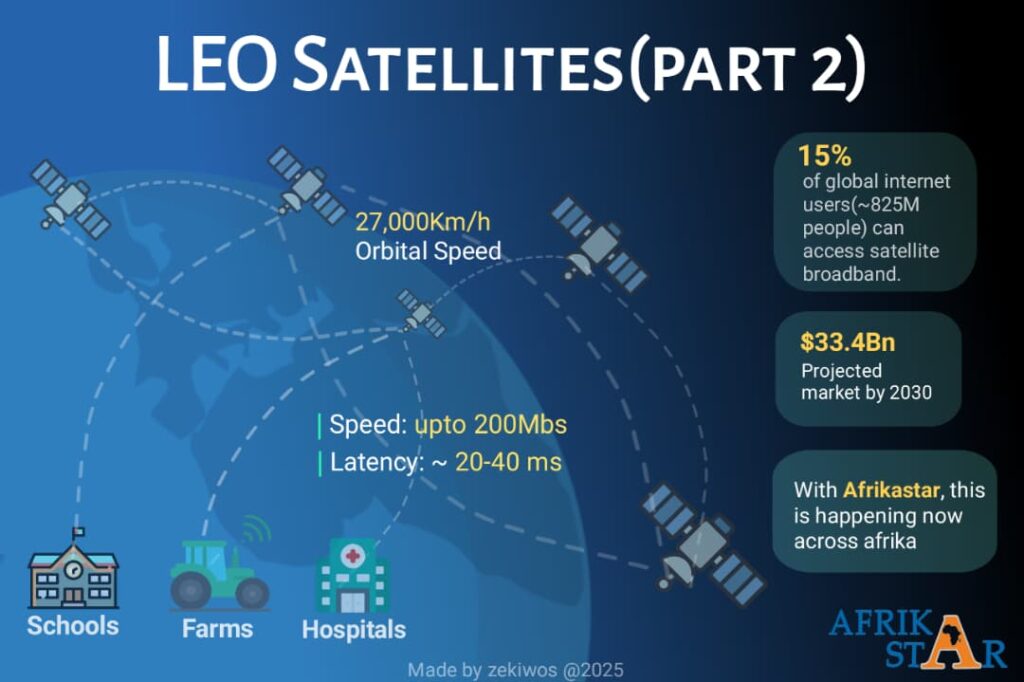---------------------
How LEO Satellites Work in Real Life (part 2)
Ever wondered what happens after the basics? Here’s how LEO satellite tech moves from space to real world impact — and the numbers behind it.
Early beginnings (1965): The journey started with Early Bird (Intelsat-1) in 1965 — the first commercial communications satellite linking continents. Decades later, services like DirecPC in 1996 brought satellite internet to homes, delivering files and web content faster than many dial-up modems.
Signals in motion: Your data travels up from your device, hops between fast-orbiting satellites in a constellation, then down again — enabling internet access in places where fiber or cable networks are few or don’t reach.
Reduced infrastructure cost : Because there’s no need for miles of ground cables in forests, mountains, or rural zones, setup becomes cheaper and faster. All you need is the antenna + satellite link.
Around 15% of global internet users (nearly 825 million people) are in the realistic addressable market for satellite broadband today. The market is projected to double by 2030, reaching ~USD 33.4B.


